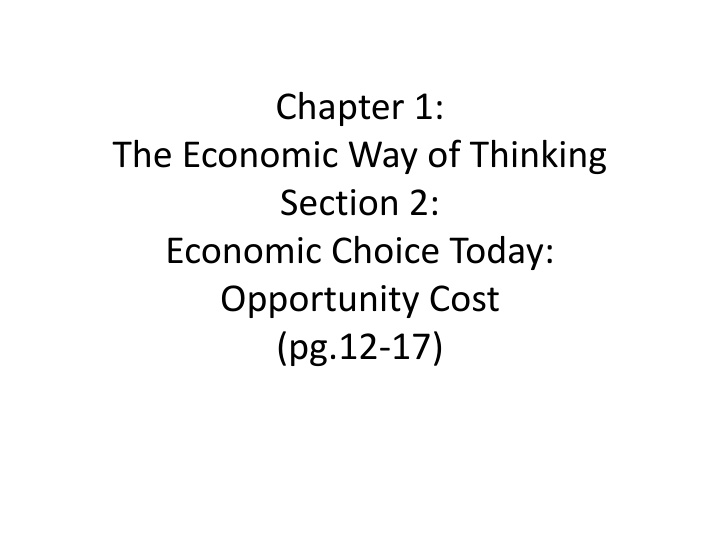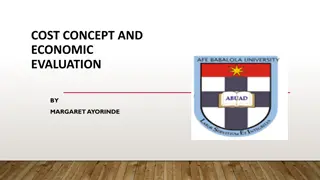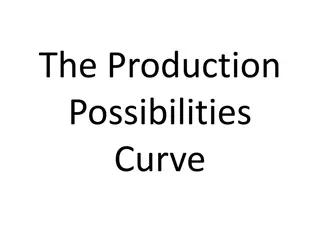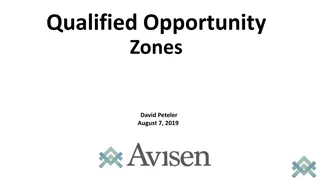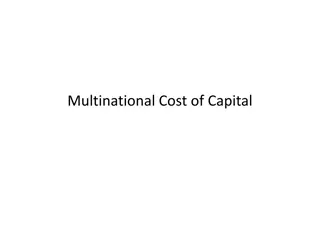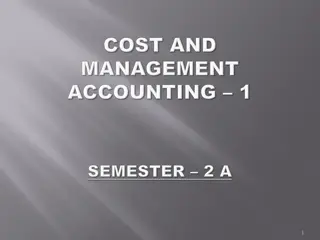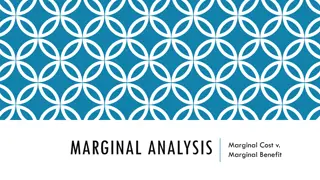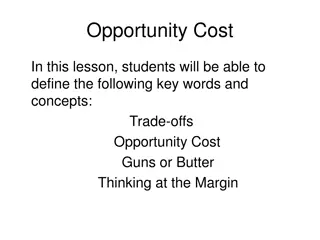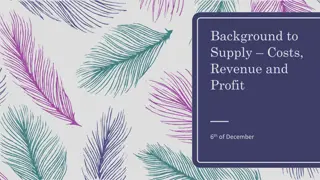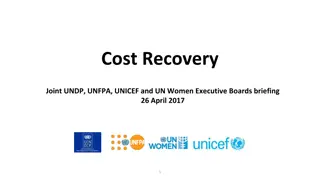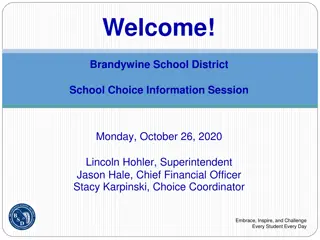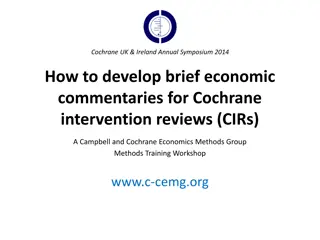Economic Choice Today: Understanding Opportunity Cost
Making choices involves weighing incentives, utility, and opportunity cost. Every decision has costs and trade-offs, emphasizing the importance of analyzing choices through cost-benefit analysis. Understanding these economic principles helps individuals, businesses, and governments make informed decisions.
Download Presentation

Please find below an Image/Link to download the presentation.
The content on the website is provided AS IS for your information and personal use only. It may not be sold, licensed, or shared on other websites without obtaining consent from the author.If you encounter any issues during the download, it is possible that the publisher has removed the file from their server.
You are allowed to download the files provided on this website for personal or commercial use, subject to the condition that they are used lawfully. All files are the property of their respective owners.
The content on the website is provided AS IS for your information and personal use only. It may not be sold, licensed, or shared on other websites without obtaining consent from the author.
E N D
Presentation Transcript
Chapter 1: The Economic Way of Thinking Section 2: Economic Choice Today: Opportunity Cost (pg.12-17)
How do you make choices? One factor involves incentives, or benefits offered to encourage people to act in certain ways. Choice is also influenced by utility, or the benefit of satisfaction gained from the use of a good or service. When they economize, people consider both incentives and utility. In common usage the word economize means to cut costs, however, in strict economic terms economize means to make decisions according to what you believe is the best combination of costs & benefits.
Motivations for Choice How do you decide between two options? For example should you study or go to a movie? You have to weigh the costs against the benefits. In making the decision, you are guided by self- interest, which means that you look for ways to maximize the utility you get in spending your time.
No free Lunch There is no such thing as a free lunch. This means that every choice involves costs. These costs could be money, time or some other thing you value. If you chose to study, you will get a better grade. If you go to the movie you receive the satisfaction of relaxation but you sacrifice your grade. Look at the Application example at the bottom of page 13.
Trade-Offs Choices, as you have learned, always involve costs. For every choice you make, you give up something. The alternative that you give up when you make an economic choice is called a trade-off. Usually, trade-offs do not require all-or-nothing choices. Rather, they involve giving up some of one thing to gain more of another.
Counting the Opportunity Cost All economic choices, involve opportunity cost. The opportunity cost of a decision is the value of the next-best alternative, or what you give up by choosing one alternative over another. An example could be should you take summer school classes to graduate early or have time off and relax during the summer.
Analyzing Choices The practice of examining the costs and the expected benefits of a choice as an to decision making is called cost-benefit analysis. Cost-benefit analysis is one of the most useful tools for individuals, businesses, and governments when they need to evaluate the relative worth of economic choices.
Marginal Cost & Benefits How did you arrive at your decision? To explain it, economists would look at marginal costs and marginal benefits. Marginal cost is the cost of using one more unit of a good or service, while marginal benefit refers to the benefit or satisfaction received from using one or more unit of a good or service. The analysis of marginal costs and marginal benefits is central to the study of economics. It helps to explain the decisions consumers, producers, and governments make as they try to meet their unlimited wants with limited resources.
